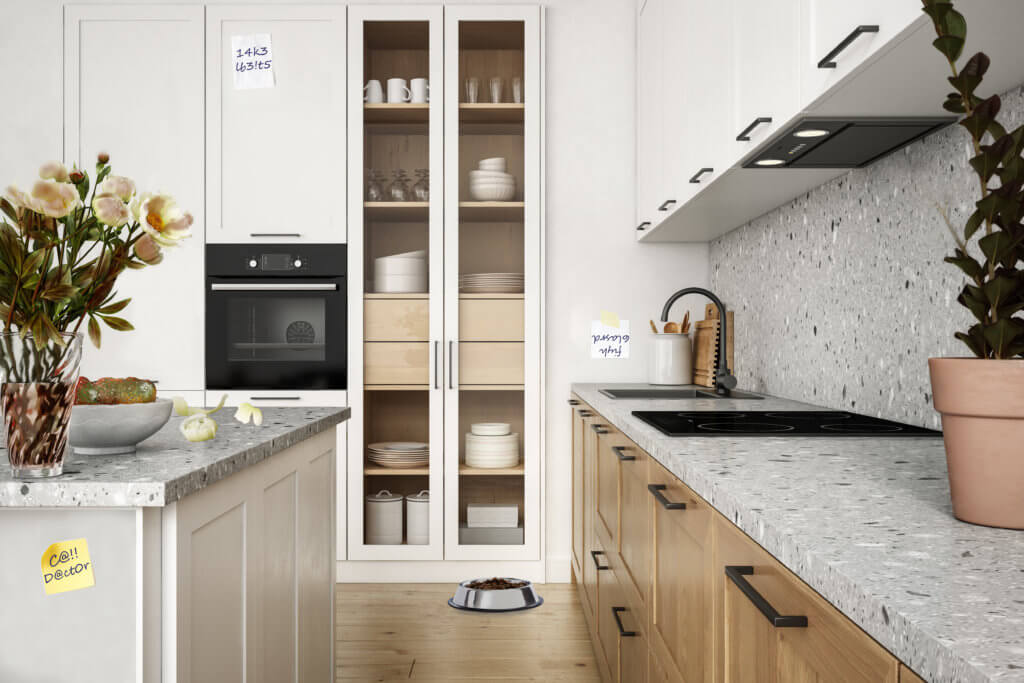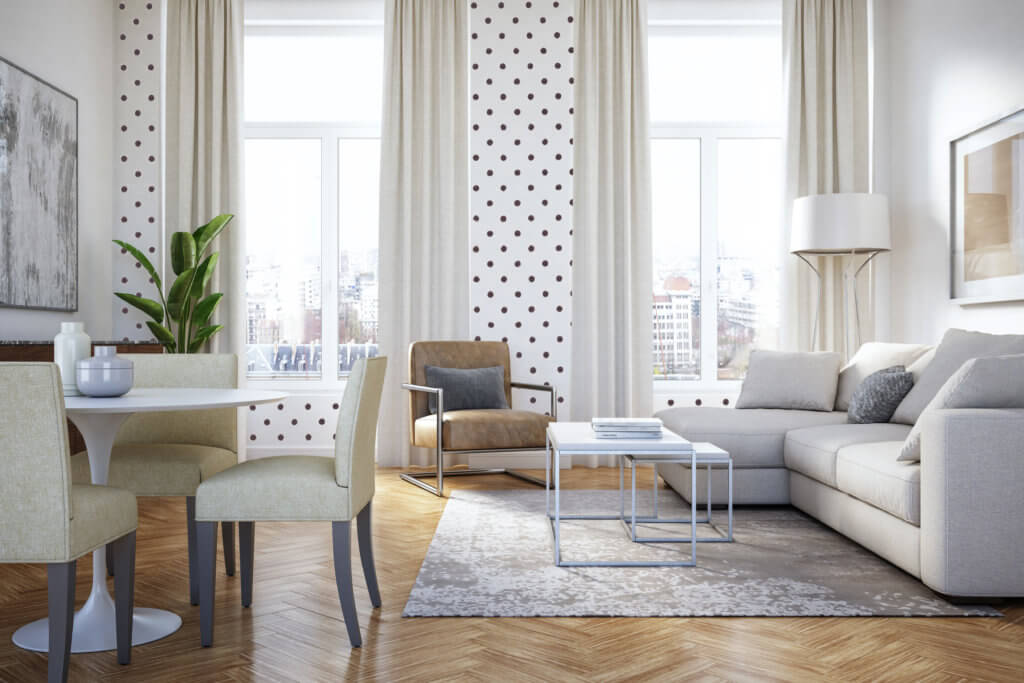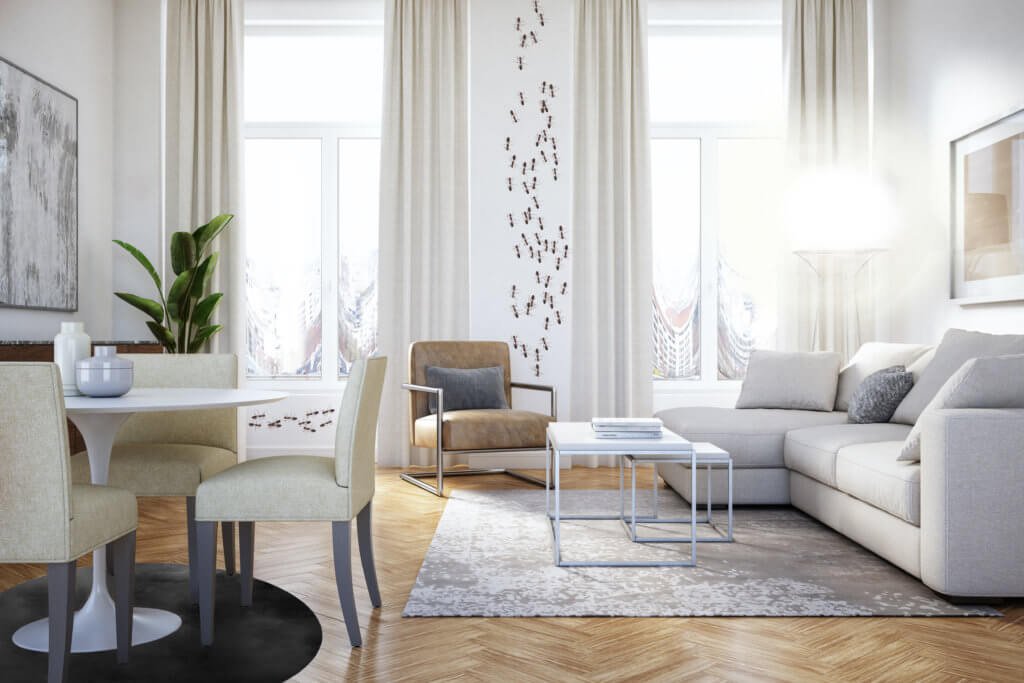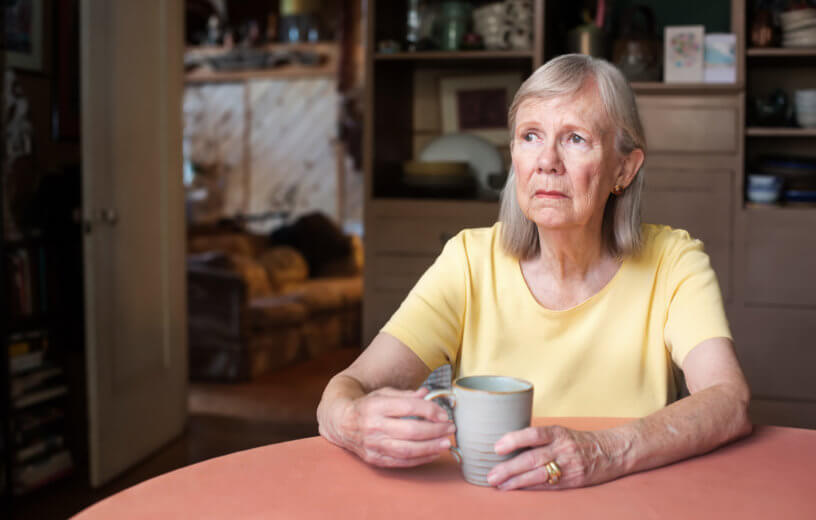TORONTO, Ontario — There are over six million people living with dementia in the United States alone. While it’s easy to focus on the impact the disease has on memory, researchers say the changes in perception can be just as stark. To raise awareness about these deeper issues, a team has put together a simulation to show the world what it actually feels like to have dementia.
Dr. Heather Palmer and Amica Senior Lifestyles say the degenerative condition can drastically change the way someone perceives the world around them. For example, normal wall patterns can appear to a dementia patient to be insects crawling up a wall. The shadow the dining room table casts can look like a deep and terrifying hole in the ground.
For someone with one of the various forms of dementia, including Alzheimer’s, old habits can also be hard to break. Patients may keep putting out food or setting the table for loved ones or pets who have already passed away.
“It is hard for us to imagine how the world might seem and change for people living with dementia, however, it’s important to understand that certain views and behaviors might impact or be indicative of someone living dementia,” Dr. Palmer, Amica’s Cognitive Well-Being Advisor says in a statement.
The world is a very different place for dementia patients
To help the public understand the daily challenges for Alzheimer’s and other dementia patients, Palmer created several examples of how these individuals see the world versus how it truly appears.

Researchers say leaving notes for a loved ones with dementia is a good way to help them remember important tasks. Unfortunately, even these can be misinterpreted or misplaced by someone dealing with cognitive impairments.

In the kitchen image, the helpful reminders have become disorganized. Instead on being all in one place, a dementia patient may start placing them in random spots. Even worse, the disease may affect their ability to read their own or someone else’s handwriting.
In the dementia patient’s kitchen, flowers and plants are also dying or missing. Those battling memory issues often forget to take proper care of their homes and themselves. They also have a greater tendency to misplace critical objects, like their glasses.
As for those old habits, while the normal kitchen no longer has dog food in it, a dementia patient may still be putting down food for a companion they no longer have.
Dementia may even alter someone’s perception of time

Alzheimer’s and dementia don’t just alter how patients see rooms and words, it can even change how they perceive day and night. A normal sunny morning on the patio can be just as confusing as the disorganized kitchen.

On the dementia patient’s patio, the dark sky reveals why people with the disease mix up their days and nights. Although there are clear signs it’s daytime in both pictures, an Alzheimer’s patients may confuse 4am for 4pm and vice versa.
The slippers again show how items can become easily misplaced. While it may have made sense to put them there at one time, it may not be the right place later on. The same memory issues create tripping and falling hazards in the dementia patient’s garden. Dangerous tools and garden hoses left out due to failing memory can injure seniors long after they stopped using them.
Terrifying distortions of reality inside your own home

While the familiar surroundings of home bring comfort to most people, dementia patients may not see it that way. The disease can distort their perception of the most innocuous thing, like a shadow or polka dot walls.

In the dementia patient’s living room, busy wallpaper can overwhelm the senses. Normal dots can start to look at bugs moving along the walls like ants.
Shadows also play tricks with depth perception. The normal shadow of a table or chair can seem like a bottomless pit in the middle of the room. Researchers say this can scare dementia patients into walking around shadows in their own home or avoiding some rooms completely. Other depth perception issues include seeing objects out of a window. The scene outside can appear distorted, even if objects are close by.
Sensitivity to light is another symptom of the disease. They may even perceive the soft glow of a dim lamp to be blinding and uncomfortable.
“From noticing changes in behavior when walking into rooms to neglecting plants, dementia can take many forms on someone’s way of life. But, through the use of various tools and tools and approaches, those living with dementia are still able to function well (or even better than they did before),” Dr. Palmer concludes.
Taking care of caregivers
The team at Amica Senior Lifestyles also has a number of tips for the loved ones and caregivers of dementia patients.
Those include building a base of knowledge to help them gain perspective on the challenges seniors with dementia face. Researchers advise caregivers to create strategies that create joy and minimize triggers that may distress an Alzheimer’s patient. Family members can also track activities that help comfort a senior with dementia, like soothing music or viewing old photos.
People providing support also need support themselves. The teams recommends that family and other caregivers connect with others in similar positions. It’s important to ask for a break to avoid burnout, frustration, and feelings of guilt or grief.

Just been showing pictures to my husband ( he has vascular dementia) of him in some of his favourite places and saying ‘that is you’ to most. With the final one I asked if he knew who it was and he immediately said ‘you’. I realise there was no recognition of himself so it was a good answer as all the others were of someone called you.